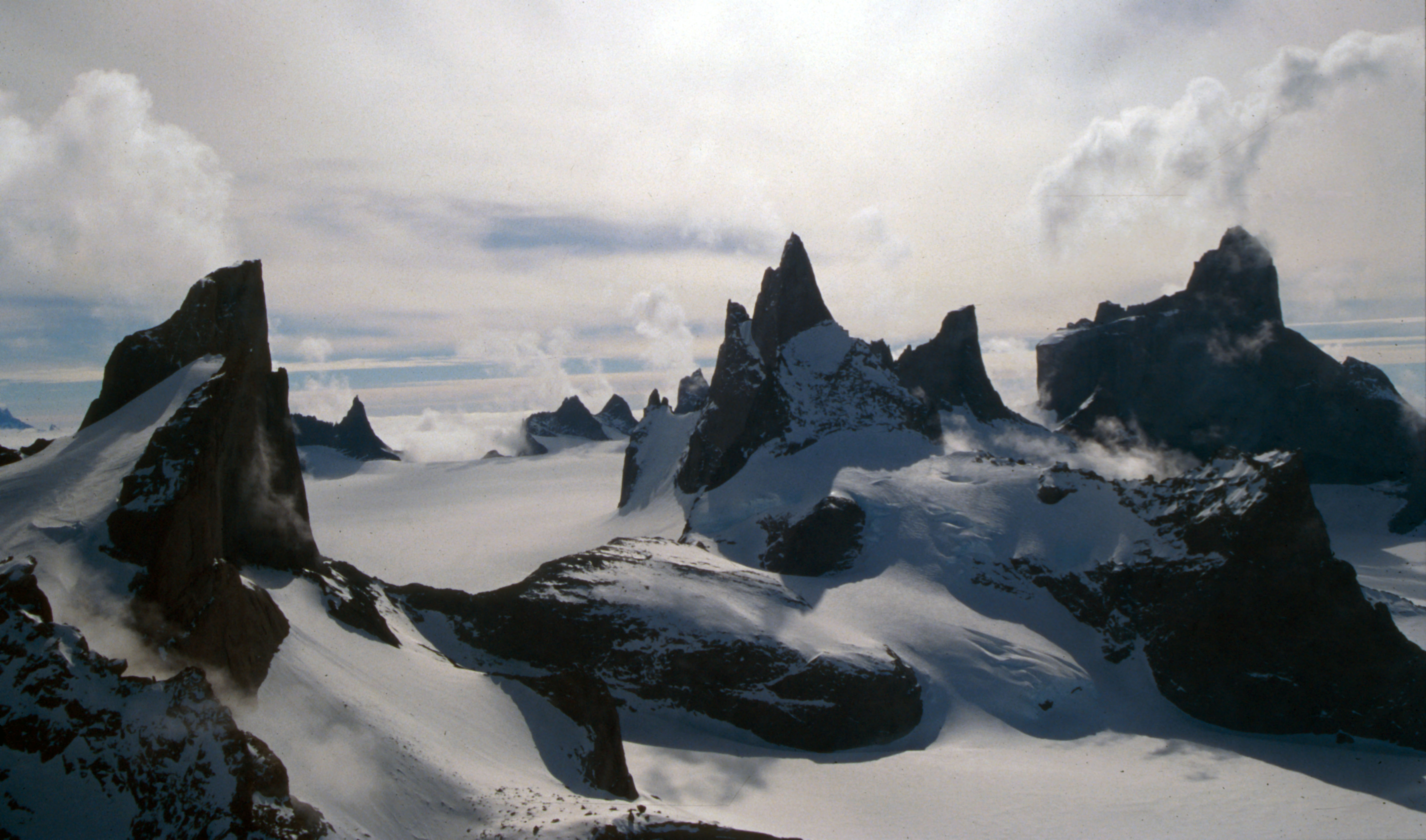|
Jule Peaks
The Jule Peaks () are a small group of isolated peaks located about west-northwest of Borg Mountain Borg Mountain is a large, flattish, ice-topped mountain with many exposed rock cliffs, standing at the northern end of Borg Massif in Queen Maud Land. Borg Mountain and its features were mapped and named by Norwegian cartographers from surveys an ... in Queen Maud Land, Antarctica. They were mapped by Norwegian cartographers from surveys and air photos by the Norwegian–British–Swedish Antarctic Expedition (1949–1952), and named Juletoppane (the Christmas peaks). The Annandags Peaks sit about 15 nautical miles (30 km) southwest. References Mountains of Queen Maud Land Princess Martha Coast {{PrincessMarthaCoast-geo-stub ... [...More Info...] [...Related Items...] OR: [Wikipedia] [Google] [Baidu] |
Borg Mountain
Borg Mountain is a large, flattish, ice-topped mountain with many exposed rock cliffs, standing at the northern end of Borg Massif in Queen Maud Land. Borg Mountain and its features were mapped and named by Norwegian cartographers from surveys and air photos by the Norwegian–British–Swedish Antarctic Expedition (1949–1952). The original name ''Borga'' means "the castle". Constituent and nearby features Høgskotet Spur ("High Bulkhead Spur") is a high rock spur on the north side of Borg Mountain. Borghallet, a gently sloping plain, lies north of the mountain. Rindebotnen Cirque ("Mountain Cirque") is a cirque indenting its northeast wall. Kvasstind Peak ("Sharp Peak") is a sub-peak on the northeast part of Borg Mountain. Slalåma Slope ("Slalom Slope") is a steep ice slope on the northeast side of the mountain. Spiret Peak ("The Spire") is a sub-peak in the northwest part of Borg Mountain. Blåisen Valley ("Blue Ice Valley") is a small cirque-like valley on the west side ... [...More Info...] [...Related Items...] OR: [Wikipedia] [Google] [Baidu] |
Queen Maud Land
Queen Maud Land ( no, Dronning Maud Land) is a roughly region of Antarctica claimed by Norway as a dependent territory. It borders the claimed British Antarctic Territory 20° west and the Australian Antarctic Territory 45° east. In addition, a small unclaimed area from 1939 was annexed in June 2015. Positioned in East Antarctica, it makes out about one-fifth of the continent, and is named after the Norwegian queen Maud of Wales (1869–1938). In 1930, the Norwegian Hjalmar Riiser-Larsen was the first person known to have set foot in the territory. On 14 January 1939, the territory was claimed by Norway. On 23 June 1961, Queen Maud Land became part of the Antarctic Treaty System, making it a demilitarised zone. It is one of two Antarctic claims made by Norway, the other being Peter I Island. They are administered by the Polar Affairs Department of the Norwegian Ministry of Justice and Public Security in Oslo. Most of the territory is covered by the east Antarctic ic ... [...More Info...] [...Related Items...] OR: [Wikipedia] [Google] [Baidu] |
Norwegian–British–Swedish Antarctic Expedition
The Norwegian–British–Swedish Antarctic Expedition (also known as NBSX or NBSAE) (1949–1952) was the first Antarctica expedition involving an international team of scientist A scientist is a person who conducts Scientific method, scientific research to advance knowledge in an Branches of science, area of the natural sciences. In classical antiquity, there was no real ancient analog of a modern scientist. Instead, ...s. The team members came from Norway, Sweden and the Commonwealth of Nations, British Commonwealth of Nations. History The Norwegian–British–Swedish Antarctic Expedition was the first expedition to Antarctica involving an international team of scientists. The expedition was led by John Schjelderup Giæver, a Norwegian author and polar researcher. The expedition had the goal of establishing whether climatic fluctuations observed in the Arctic were also occurring in the Antarctic. A base known as Maudheim Station, Maudheim was established on the Quar Ice S ... [...More Info...] [...Related Items...] OR: [Wikipedia] [Google] [Baidu] |
Annandags Peaks
The Annandags Peaks () are a group of small, isolated peaks about southwest of the Jule Peaks (Christmas Peaks) in Queen Maud Land. They were mapped by Norwegian cartographers from surveys and from air photos by the Norwegian–British–Swedish Antarctic Expedition (1949–52) and named "Annandagstoppane" (Boxing Day's Peaks). The Annadagstoppane granite is the only exposed part of the Archaean basement of the Grunehogna Craton and the only Archaean fragment of West Gondwana (Africa and South America) left in Antarctica. U-Pb dating of the youngest detrital zircons from Annandagstoppane returned an age of 3067±8 Ma and a tectonic-magmatic history identical to that of the Kaapvaal Craton in southern Africa. This suggests that the Kaapvaal-Grunehogna Craton remained stable for 2.5 billion years before it was split by the Pan-African orogeny. Hafnium dating of phenocrystic and detrital zircons in the granite revealed several crustal sources up to 3.9 billion years old. T ... [...More Info...] [...Related Items...] OR: [Wikipedia] [Google] [Baidu] |
Mountains Of Queen Maud Land
A mountain is an elevated portion of the Earth's crust, generally with steep sides that show significant exposed bedrock. Although definitions vary, a mountain may differ from a plateau in having a limited summit area, and is usually higher than a hill, typically rising at least 300 metres (1,000 feet) above the surrounding land. A few mountains are isolated summits, but most occur in mountain ranges. Mountains are formed through tectonic forces, erosion, or volcanism, which act on time scales of up to tens of millions of years. Once mountain building ceases, mountains are slowly leveled through the action of weathering, through slumping and other forms of mass wasting, as well as through erosion by rivers and glaciers. High elevations on mountains produce colder climates than at sea level at similar latitude. These colder climates strongly affect the ecosystems of mountains: different elevations have different plants and animals. Because of the less hospitable terrain ... [...More Info...] [...Related Items...] OR: [Wikipedia] [Google] [Baidu] |

